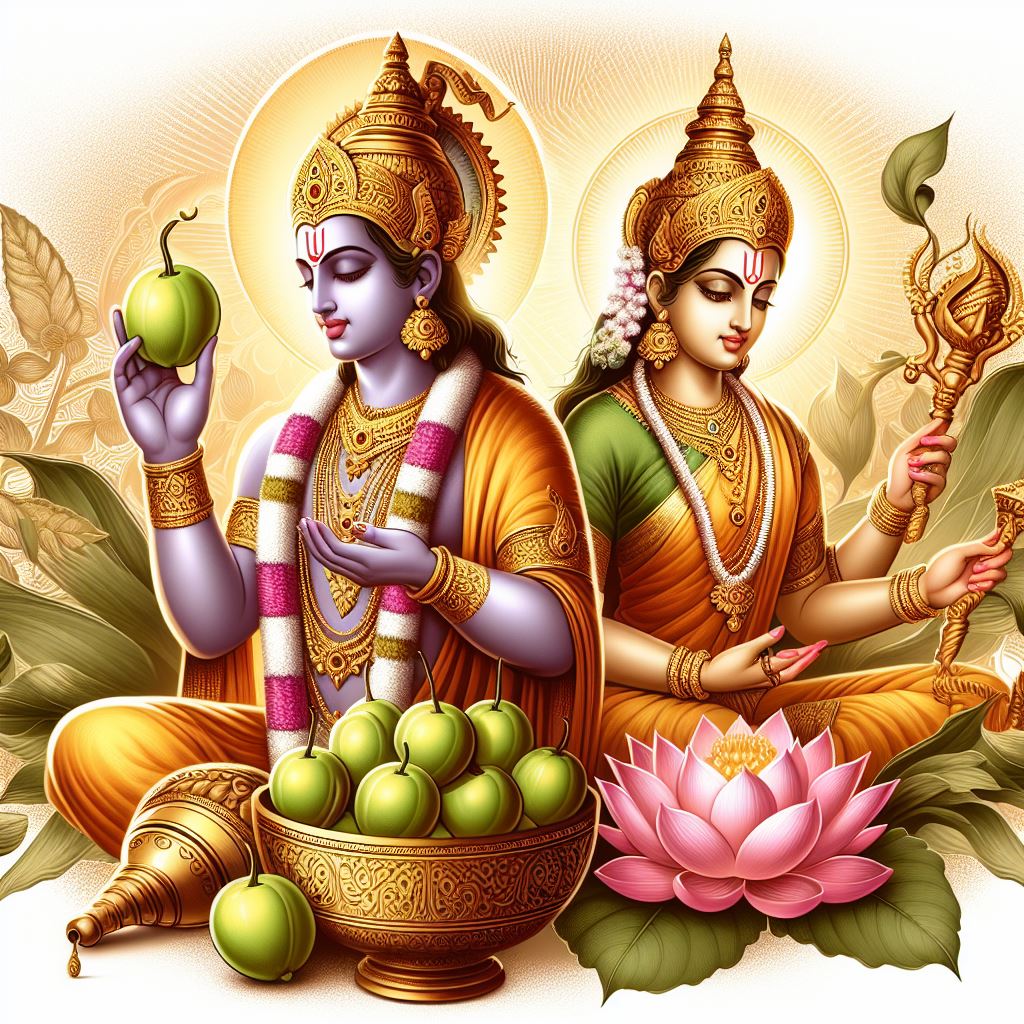🌼 Yogini Ekadashi 🌼

॥ ॐ श्री परमात्मने नमः ॥
🚩 Yogini Ekadashi 2024 🚩

Significance of Yogini Ekadashi 2024:
Yogini Ekadashi is an auspicious day, and by keeping strictly to the Ekadashi regulations and fasting on this day, one can achieve redemption and atone for all of their sins. The importance of Yogini Ekadashi is further demonstrated by the notion that following Yogini Ekadashi will cure bodily diseases and grant devotees excellent health.
The significance of the Ekadashi fast, or vrat, is mentioned in ancient Hindu literature by Lord Sri Krishna, an avatar of Lord Vishnu, who states that it is more significant than other forms of sacrifice, such as almsgiving to the poor, horse sacrifice (Ashvamedha), or even seeing Lord Vishnu. It is stated that anyone who follows the laws and maintains a fast on this day will be set free and granted a spot in Lord Vishnu’s dwelling.
Lord Sri Krishna says in the Yogini Ekadashi katha that following Yogini Ekadashi gives Yogini Ekadashi a unique meaning by helping devotees return to the spiritual path rather than drowning in the world’s materialistic ocean.
***
Yogini Ekadashi Date and Time:
- Yogini Ekadashi : Tuesday, July 2, 2024
- Parana Time : July 3rd, from 05:38 AM to 07:10 AM
- On Parana Day, Dwadashi End Moment : 07:10 AM
- Ekadashi Tithi Begins : 10:26 AM on July 1, 2024
- Ekadashi Tithi ends : 08:42 AM on July 2, 2024.
Rituals: Yogini Ekadashi Vidhi

The ancient Hindu literature details the Yogini Ekadashi ceremonies, which are said to have been given by Lord Sri Krishna in response to a question posed by Yudhishthira, the eldest of the Pandava brothers, in the Mahabharata. The Ekadashi Vrat Vidhi Yoginis are:
- The person should have a full dental cleaning in the afternoon the day before Yogini Ekadashi, the tenth day of the Krishna Paksha, and dinner at sunset.
- The person should plan to observe the fast religiously on the morning of Yogini Ekadashi. The individual should take a bath in a lake or river, as these are considered to be the most cleansing, or, if neither is accessible, they should use pond water.
- The individual should smear mud all over their body while saying a prayer to Mother Earth. The invocation, “O Asvakrante!” Dear Rathakrante, Salutations, Vishnukrante! Dear Vasundhare, Mrttike,! Oh, Earth Mother! Please take away all of my sins from previous lifetimes so that I can go to the dwelling place of the Almighty Lord Vishnu.
- With total devotion, worship Lord Govinda and present the Divine with a delicious ‘Bhog’ (meal) as well as flowers, sandalwood paste, tulsi leaves, dhoop, and other offerings.
- To honor the Lord, light a ghee lamp at home.
- Sing or chant Lord Vishnu’s praises all day long, and during the fast, stay in a really happy mood.
- Maintain complete consciousness throughout the entire night. To satisfy the Lord, try to play an instrument all night long.
- The individual should offer alms to Brahmanas the following morning and politely request their pardon for any transgressions.
- The prayer “O Pundarikaksha, O lotus-eyed Lord, now I will eat” should be said by those who maintain a strict fast until the next day. Please provide for me.
- Following the prayer, the follower is supposed to place flowers and water at Lord Vishnu’s lotus feet and ask the Lord to eat by reciting the eight-syllable mantra three times. The devotee must drink water that has been dedicated to the Lord in order to receive the full benefits of the fast.
- If the devotee so desires, they can offer sacrifices of fire.
- During the entire day of Ekadashi and into the next morning, the devotee is expected to take baths, engage in devotional activities, perform acts of charity, and sing. and chant praises to Lord Vishnu. Additionally, a devotee can go to a temple and make prayers.
***
Fasting Rules of Yogini Ekadashi:
As per specifications in the ancient texts, to get the benefits of the fasting on Ekadashi the person should adhere to the rules strictly.
- On the morning of Yogini Ekadashi, the devotee who is fasting ought to take a bath.
- It is forbidden to eat grains and beans on Ekadashi.
- The devotee is not allowed to kill any animals on this day.
- On Ekadashi and the following day, Dvadashi, it is forbidden to sleep throughout the day.
- The follower who is fasting should avoid contact with or encounter with any liars, scammers, or anybody engaged in any illicit activities. According to the scriptures, if a devotee happens to come across such a person, they should purify themselves by standing under the sun and staring at it directly.
- Not having sex and not betting on Dwadashi and Ekadashi.
- Devotees are forbidden from eating in other people’s homes on Dwadashi (the day following Ekadashi), to eat just one meal, to ingest honey and urad-dal (black lentils), to eat on Bell metal plates or silverware, and to rub oil over their bodies.
- The ancient book states that the devotee must purify himself by consuming amalaki fruit or Tulsi leaves if he or she needs to speak to someone from a lower caste.
- If the follower is unable to break the fast the following day for any reason, they should symbolize the fast’s conclusion with water and then eat whenever it is convenient.
***
(chanting mantra):
ॐ नमो नारायणाय:॥
ॐ श्री विष्णवे नम:॥
ॐ नमो भगवते वासुदेवाय॥
ॐ नारायणाय विद्महे वासुदेवाय धीमहि तन्नोः विष्णुः प्रचोदयात् ||
***
What is Yogini Ekadashi?
Yogini Ekadashi is the Ekadashi that occurs after Nirjala Ekadashi and before Devshayani Ekadashi. In the North Indian calendar, Yogini Ekadashi occurs during Krishna Paksha of Ashadha month; in the South Indian calendar, it occurs during Krishna Paksha of Jyaishta month. It currently occurs in either June or July, according to the English calendar.